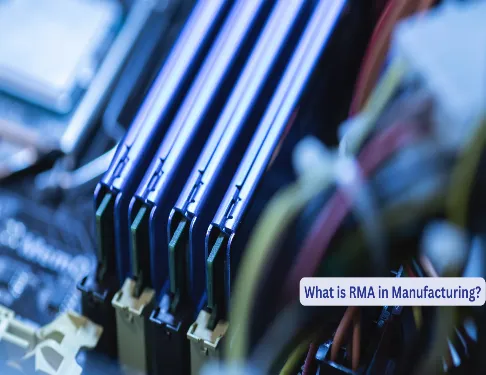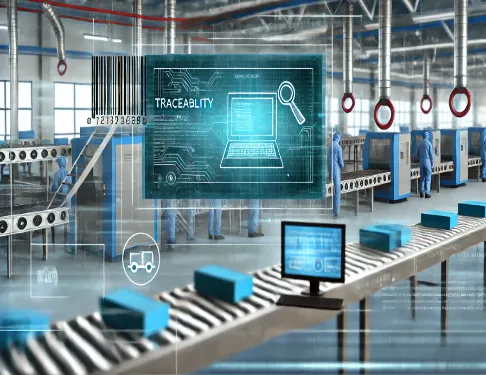What is RMA in Manufacturing? A Guide to Returns Management
Return Merchandise Authorization, or RMA for short, plays a pivotal role in both manufacturing and retail worlds. It connects two critical concepts...
By AMREP | Posted on July 23, 2024

In manufacturing, the quest for efficiency, quality, and speed has led to the adoption of various methodologies aimed at enhancing productivity and reducing costs. Among these, Continuous Flow Manufacturing (CFM) stands out as a transformative approach, enabling businesses to streamline operations and significantly improve their bottom line. This blog delves into the essence of CFM, its advantages, implementation strategies, and real-world data, presented through tables, and pie charts to offer a comprehensive understanding of this pivotal manufacturing philosophy.
Continuous Flow Manufacturing is a production strategy that emphasizes the smooth, uninterrupted movement of materials through the production process. This method minimizes the waiting time between steps, reduces work-in-process inventory, and aims for a production cycle with little to no downtime. Unlike batch processing, CFM focuses on producing a single product or a small range of products continuously, thus ensuring a consistent and rapid output.
Core principles are designed to optimize production efficiency and quality. Let's explore how each principle plays a crucial role in achieving the ultimate goal of CFM:
Synchronization: Aligning all steps in the production process to ensure that each component moves to the next phase without delay.
Streamlining: Eliminating unnecessary steps, reducing complexity, and optimizing the flow of materials.
Quality Control: Integrating quality checks throughout the production process to maintain high standards and minimize defects. Explore further: Quality Control Tools for Managing Your Outsourced Supply Chain
Flexibility: Adapting quickly to changes in demand or production requirements without significant downtime or reconfiguration.
The implementation of CFM brings with it a lot of benefits, such as:
| Advantage | Description |
|---|---|
| Reduced Lead Times | By minimizing delays, CFM significantly shortens the time from order to delivery. |
| Lower Inventory Levels | Continuous production reduces the need for large stockpiles of raw materials and finished goods. |
| Improved Quality | Ongoing quality checks help identify and rectify issues promptly, leading to higher product standards. |
| Increased Efficiency | Streamlining processes and reducing downtime boosts overall operational efficiency. |
| Cost Reduction | Lower inventory and improved efficiency contribute to significant cost savings. |
Transitioning to CFM is a strategic journey that requires meticulous planning, execution, and continuous improvement. This strategic approach encompasses several critical steps, such as:
In exploring the data-driven perspective of CFM, we'll delve into a hypothetical case study of "FuturaTech," a company specializing in the production of electronic components. Before the adoption of CFM, FuturaTech faced several challenges, including long lead times, high inventory levels, frequent defects, and inconsistent efficiency rates. The implementation of CFM aimed to address these issues and transform FuturaTech's manufacturing process.
FuturaTech's pre-CFM scenario was characterized by inefficiencies and waste, significantly impacting its competitiveness and profitability.
The adoption of CFM principles brought about substantial improvements across all fronts. Let's visualize these changes with data presented in tabular form for a clearer comparison.
| Metric | Before CFM | After CFM | Improvement |
|---|---|---|---|
| Lead Time (days) | 20 | 10 | 50% |
| Inventory Levels | High | Reduced by 60% | - |
| Defect Rate (%) | 7 | 2 | 71% |
| Efficiency (%) | 65 | 85 | 30% |
Continuous Flow Manufacturing is not just a production methodology; it's a strategic approach that requires commitment, flexibility, and a willingness to embrace change. By focusing on streamlining processes, reducing waste, and improving quality, businesses can achieve remarkable gains in efficiency, productivity, and customer satisfaction. As we have seen through data and real-world examples, the benefits of CFM are substantial, making it a compelling choice for manufacturers aiming to stay competitive in today's fast-paced market.
AMREP is committed to providing comprehensive production management services, focusing on implementing Continuous Flow Manufacturing (CFM) and guiding businesses through the transformative journey towards operational excellence. Utilizing AMREP's expertise in production management, companies can utilize CFM to achieve reduced lead times, streamlined operations, enhanced product quality, and improved efficiency. This strategic approach not only reinforces AMREP's position as an industry leader but also empowers its clients to secure a competitive advantage and confidently navigate the complexities of the modern manufacturing landscape.
What Is Continuous Flow Manufacturing? Its Keys to Success.
https://blog.kainexus.com/continuous-flow-manufacturingCONTINUOUS FLOW MANUFACTURING. A New Approach to Monomer Manufacturing for Ophthalmic Applications
https://www.sigmaaldrich.com/deepweb/assets/sigmaaldrich/marketing/global/documents/continuous-flow-manufacturing-white-paper.pdfContact Us To See What We Can Do
Call Us
Mon - Sat 9.00 - 18.00
Sunday Closed


18 - July 2024
18
July
2024
Return Merchandise Authorization, or RMA for short, plays a pivotal role in both manufacturing and retail worlds. It connects two critical concepts...

12 - July 2024
12
July
2024
Traceability in manufacturing refers to the ability to track and trace every aspect of the production and distribution process...

21 - February 2024
21
February
2024
Lean manufacturing is a key method used to streamline production. Its overall objective is to maximise value and customer...
